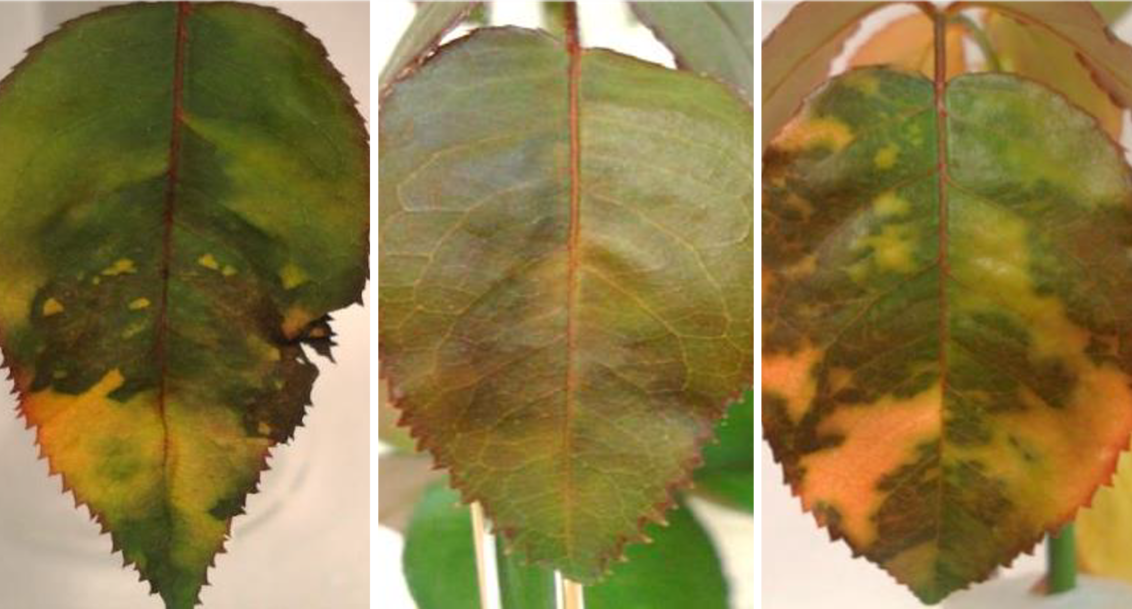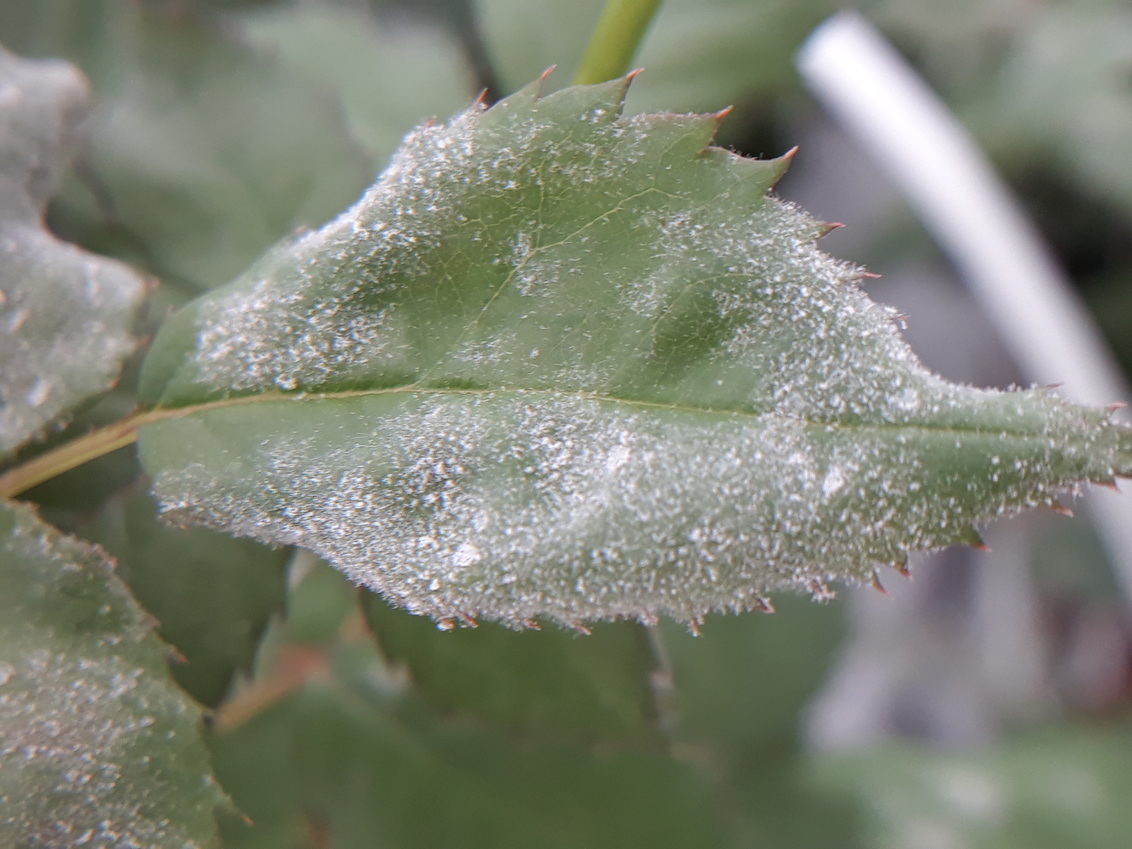Measures for mildews

Botrytis, which we talked about in my last blog, is just one of the foliar diseases that pose a risk in the cool, damp conditions at this time of year. Two others to watch out for are powdery mildew and downy mildew.
Despite their similar names they’re completely unrelated: powdery mildews are fungi while downy mildews are oomycetes, the same group of micro-organisms as those troublesome root diseases Pythium and Phytophthora. Oomycetes share some of the superficial characteristics of fungi but much of their genetics and biochemistry are totally different.
It’s useful to talk about powdery and downy mildews together here, though, as understanding their similarities and differences is key to managing them well. It’s often easy to confuse the symptoms but you need to get it right as not all products effective on the one can control the other.
A good ‘rule of thumb’ is that the fungal growth and powdery sporulation of powdery mildew tend to be seen on the upper surface of the leaf while the downy-textured oomycete pathogen tends to grow on the leaves’ underside.
Both are favoured by damp and humidity so all the environmental management measures mentioned in my last blog – good air movement and humidity control, and avoiding situations where leaves sit wet – are the first line of defence.
They are also only able to grow and sporulate on living tissue but can produce resting spores or structures on debris, which can be a source of reinfection, hence the need for good nursery hygiene.
Downy mildews
Impatiens, pansy, nicotiana, stocks and wallflower are particularly prone.
Peronospora, Plasmopara and Bremia are the three main genera responsible on ornamentals though each species or strain of these is quite host specific. Peronospora violae on pansy is one example: an outbreak on pansies won’t spread to a different neighbouring crop, but the conditions that favoured it could still lead to an outbreak of a different downy mildew strain or species.
First symptoms are dull yellow or grey-green (sometimes with a purplish tinge) flecks or patches on the upper side of leaves, often angular in shape and bounded by the leaf veins. Most characteristic is the white or grey (it may even be purplish) felty or downy mycelial growth and sporulation underneath. Growth can be distorted and leaves may drop.
The pathogen can be present in plants as a latent infection for up to three weeks before symptoms appear. Spores need humidity and a wet leaf surface for several hours to germinate, which is why good environmental management is so important.

Downy mildew on a rose leaves
Fungicides. Most fungicides with activity against downy mildews are protectants rather than eradicants making established outbreaks difficult to control, so prevention is critical. Bremia species and strains are hardest to control with fungicides, though they don’t affect as many ornamental crops as the other downy mildews.
Syngenta’s Amistar (protectant and eradicant) and Fubol Gold (systemic protectant) can both be used on ornamentals under EAMUs. Amistar is a good choice for the start of a programme which, in addition to Fubol Gold, should include at least one or two other products with different modes of action to manage resistance risks.
So far, we’re unaware of any resistance to metalaxyl-M, one of two active substances in Fubol Gold, in downy mildews on crops such as pansy. But with a limited range of products effective on oomycetes, resistance management is particularly important, to retain their usefulness as long as possible.
Powdery mildews
Clematis, rhododendrons and roses; and pansy, trailing petunia and verbena are among the ornamental crops commonly affected.
As with downy mildews there’s a large number of host-specific species – Podosphaera violae is the powdery mildew that attacks pansy, for example.
They can thrive in slightly warmer and drier conditions than most other fungal pathogens. They still need high humidity for several hours for spores to germinate, but are not so dependent on a wet leaf surface; subsequent growth can be rapid when days are warm and nights cool and damp.
The first symptoms may be spots or patches of white mycelium on the upper leaf surface, causing the tissue to yellow as it progresses, followed by the powdery sporulation that gives the disease its name. This starts as a light dusting, then becomes denser. Symptoms can sometimes be seen on stems too, and leaves may become slightly distorted before spores appear.
Poinsettia powdery mildew is unusual in growing on the underside of leaves and having a similar appearance to downy mildews.

Fungicides. Amistar can be used on ornamentals under an EAMU and is effective against powdery mildew as well as downy mildew and Botrytis. It should be used as part of a resistance management programme that includes products with other modes of action.
Biofungicides effective against powdery mildew are available.

